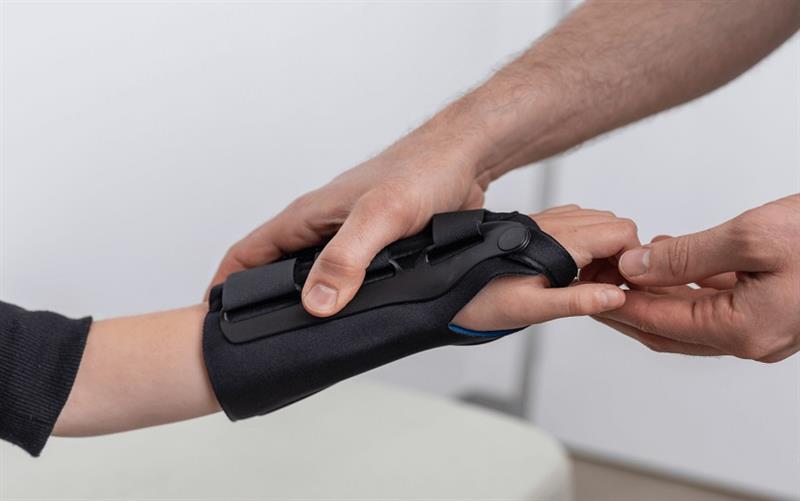
Orthotic solutions are essential for the treatment and rehabilitation of a wide range of disorders affecting the wrist, forearm, fingers, hand, and thumb. These tools are made to support, stabilize, and align in order to enhance function, lessen pain, and encourage healing. Orthotics provide individualized solutions to match each person's specific demands, including anything from common accidents to long-term disorders.
Orthotic devices for the wrist, forearm, fingers, and hand are essential for symptom management, injury prevention, and rehabilitation. These devices help people recover from injuries, manage chronic diseases, and function at their best by offering support, stability, and alignment. When paired with suitable therapy and lifestyle adjustments, customized orthotic solutions enable people to restore their independence and enhance their quality of life.
1. Finger Orthotics:
Mallet finger, trigger finger, and tendon injuries are among the disorders that are frequently treated using finger orthotics. These orthotic devices have the ability to immobilize particular joints or offer dynamic support to allow for optimal movement while safeguarding the damaged tissues. Particularly in situations involving fractures or ligament damage, custom finger splints are frequently suggested to preserve alignment and encourage recovery.
Specialized devices called finger orthotics are used to address a variety of diseases affecting the fingers. These orthotics are intended to help injured or weak fingers heal and regain function by offering support, defense, and alignment. They are designed to treat particular finger injuries or conditions such fractures, tendon injuries, arthritis, and deformities. They are available in a variety of forms, such as splints, braces, and sleeves.
Finger orthotics help injured tissues heal properly by immobilizing or limiting movement in the afflicted finger joints. By supporting the finger and avoiding excessive strain or movement, they also aid with pain relief, inflammation reduction, and the prevention of additional injuries. To aid in the healing process and improve comfort, finger orthotics may be worn all the time or only during certain activities, depending on the severity and kind of the problem.
2. Hand and Wrist Orthoses (WHO):
These orthotics cover the palm and forearm. They are mostly used to provide support for weak muscles and/or to limit wrist motion while preserving finger mobility.
Hand orthotics are adaptable devices that are used to treat a variety of hand-related disorders. They can be made to immobilize the hand and wrist, stabilize a particular joint, or offer focused support to reduce symptoms. Hand orthotics, which assist alleviate discomfort, enhance grip strength, and stop future deformity, can be beneficial for conditions like arthritis, carpal tunnel syndrome, and Dupuytren's contracture.
Wrist orthotics, sometimes referred to as wrist braces or splints, are specialist tools made to support, stabilize, and shield the wrist joint. They are frequently used to treat a range of wrist ailments, such as arthritis, tendonitis, carpal tunnel syndrome, sprains, and strains.
3. Thumb orthotics:
Grasping and pinching are two of the most common tasks requiring the thumb. For ailments such thumb arthritis, De Quervain's tenosynovitis, and skier's thumb, thumb orthotics are frequently prescribed. These orthotic devices are made to improve function, lessen inflammation, and support the thumb's natural architecture. Braces and thumb splints can limit movement and offer stability to aid in healing while enabling the performance of necessary tasks.
4. Forearm Orthotics:
Forearm orthotics provide treatment from disorders such as tennis elbow (lateral epicondylitis) and golfer's elbow (medial epicondylitis) by supporting the forearm muscles, tendons, and ligaments. These orthotic treatments support appropriate alignment during activities, reduce strain on injured tissues, and redistribute forces. In order to give targeted compression and support, forearm straps and braces are frequently utilized. This reduces discomfort and enables people to perform daily tasks and sports activities.
Typically, forearm orthotics are made out of bands or straps that may be adjusted to wrap around the forearm and offer specific compression to the injured area. They frequently consist of elastic or neoprene, which are flexible fabrics that provide a snug and comfortable fit. Gel or foam padding may also be included in some forearm orthotics in order to improve comfort and lessen pressure points.
Forearm orthotics are primarily used to relieve discomfort, lower inflammation, and support the tendons and muscles in the forearms during activities that could aggravate existing conditions. Through the application of compression and forearm stabilization, these devices aid in the more equitable distribution of forces and lessen the tension on injuries.
The purpose of forearm orthotics, commonly referred to as forearm braces or straps, is to support and relieve the tendons, ligaments, and muscles in the forearm. Forearm strains, overuse injuries, tennis elbow (lateral epicondylitis), and golfer's elbow (medial epicondylitis) are among the common diseases that these orthotic devices are used to treat.
Forearm orthotics are primarily used to relieve discomfort, lower inflammation, and support the tendons and muscles in the forearms during activities that could aggravate existing conditions. Through the application of compression and forearm stabilization, these devices aid in the more equitable distribution of forces and lessen the tension on injuries.